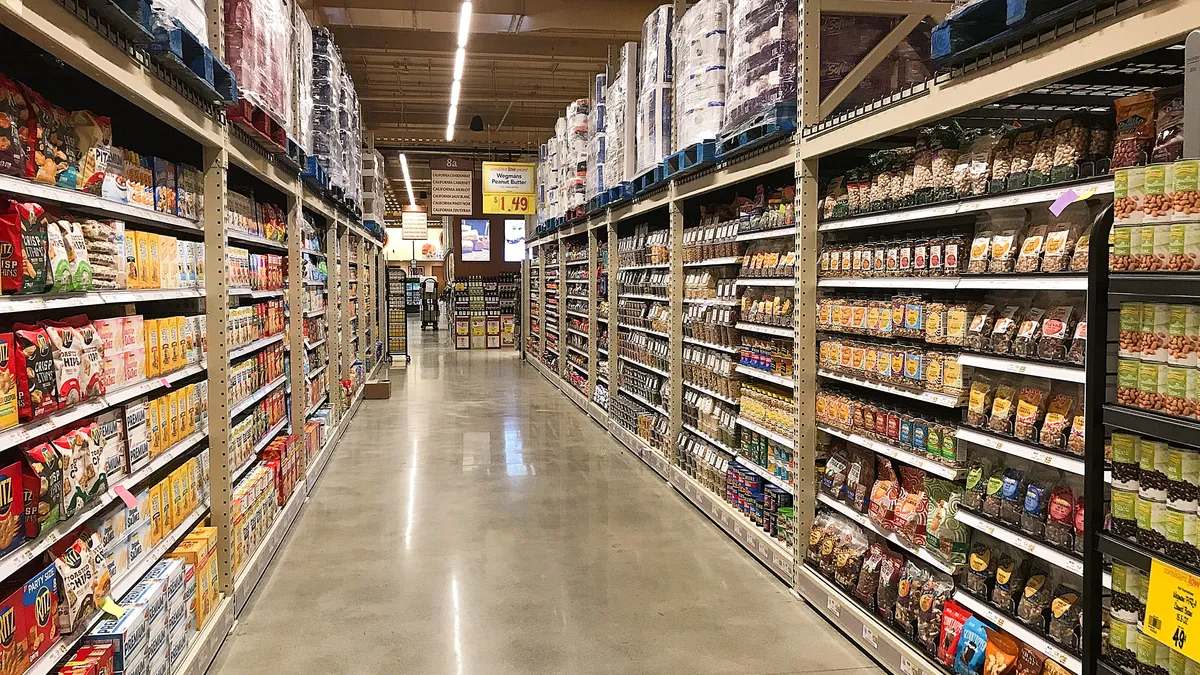Dive Brief:
- Grocery sales declined slightly in October, falling 0.4% compared with the level recorded in September, according to estimated data released by the U.S. Census Bureau Tuesday. Overall retail sales in October edged forward 0.3% compared to the previous month.
- Grocery store sales remained at a quick tempo in October relative to their pace a year ago. Sales for the month were 9.2% above their level in September 2019, an indication that consumers continue to spend heavily at supermarkets as the pandemic limits their spending at other outlets for food and other goods. Overall retail sales were up 5.7% year-over-year.
- Spending on groceries has been in a holding pattern since the spring, rising or falling less than 2% month-to-month but staying well above their levels in 2019, before the start of the pandemic.
Dive Insight:
While many grocers have reported a slowdown in comparable store sales growth as the pandemic plods on, the latest sales estimates from the federal government underscore the enduring impact the public health crisis has had on the public’s spending habits.
After rocketing ahead nearly 27% in March only to plummet more than 14% in April, grocery sales bumped up and down only slightly during each of the six subsequent months. With COVID-19 cases surging as the nation heads toward winter and health officials urging people not to travel and to avoid contact with people outside their immediate families, grocery stores should be poised to retain their strong position during the weeks to come.

In addition to receiving a higher share of consumer spending, supermarkets are seeing an increase in stock-up shopping and more online orders compared to a year ago. As COVID-19 cases spike across the country, retailers are starting to reinstitute product purchase limits and meter store traffic.
All the while, shoppers are keeping a close eye on prices. According to a survey conducted by Dunnhumby, shoppers have turned their attention to price and value as mask-wearing and other health precautions in stores have become par for the course. More than 90% of people who participated in the research said they are closely watching food prices when shopping for groceries.
Earlier this month, in a nod to the economic pressures many households are facing because of the sagging economy, Aldi announced that it is selling the ingredients needed to prepare a Thanksgiving meal for 10 people for $30.
Beyond driving sales at grocery stores, the pandemic also appears to be causing shoppers to try products they might not have purchased in the past, with the prepared food and service seafood departments benefiting the most, said Gary Budd, director of strategic planning and execution for Giant Food.
The mid-Atlantic grocer has seen an especially noteworthy uptick in seafood sales, Budd said. “I've really seen quite an uptick since COVID started and I think that just indicates people are becoming more experimental at home ... with trying different additions that maybe they would not have done before and probably would have would have purchased at a restaurant.”
According to the Food Industry Association’s U.S. Grocery Shopper Trends COVID-19 Tracker, consumers have been looking to supermarkets to supply prepared foods and platters that they can enjoy when watching sporting events at home. In addition, more than three-quarters of people in the United States say they will consider this year’s Thanksgiving a success if they can steer clear of the health and safety risks posed by the coronavirus, the association’s research shows.













